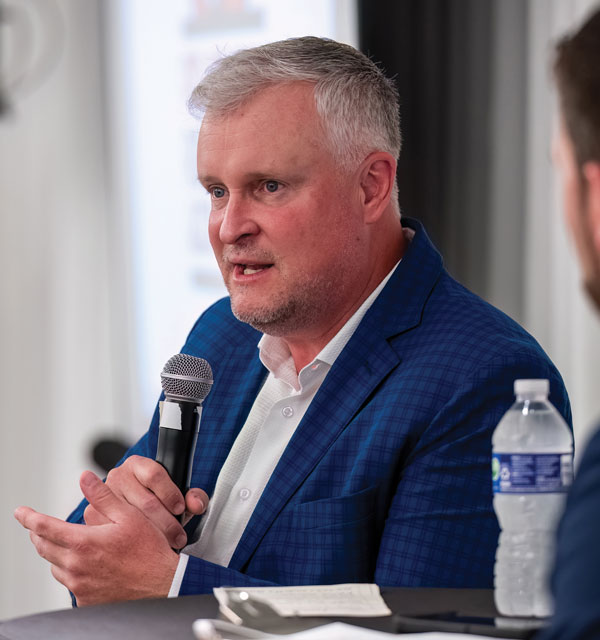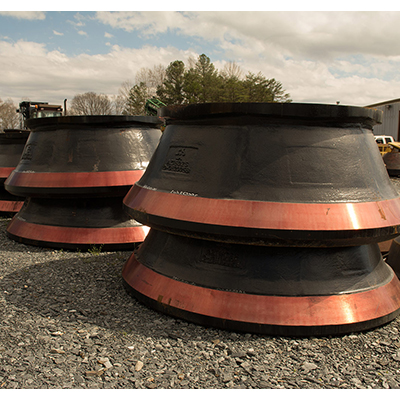Michael Johnson, president and CEO of the National Stone, Sand & Gravel Association (NSSGA), reflected on the impact of the Infrastructure Investment & Jobs Act (IIJA) during a Feb. 2 Q&A at the Pit & Quarry Roundtable & Conference. Additionally, Johnson offered perspective on when discussion of the next federal infrastructure bill should get underway.

KEVIN YANIK (PIT & QUARRY): Let’s start with where the general aggregate industry is at this point. I feel like every year for the last five or six years, we’ve been talking about good, positive momentum for the industry. Volumes are down a little bit, but it seems like everybody’s busy and demand for construction materials is good. What’s your assessment of how things are right now for our industry?
MICHAEL JOHNSON (NSSGA): When I talk to our members across the country, what I hear is almost that down is the new up as it relates to volume. 2022 was flat to 2021, and I think ‘23 is going to be flat to – or even to your point – a little bit down when the final numbers come out in terms of volume.
But price increases across the board in just about every market were well received, and they have been sustainable. So, what I’m hearing from a lot of companies is that while they didn’t move more volume necessarily, they were more profitable.
And so what we’re seeing is companies that are growing. They’re adding people. They’re expecting more volume to come. They’re busy. A lot of them are still working off backlogs.
As we think about IIJA and the money that’s coming, 56,000 new road and bridge projects across the United States have been started since IIJA was passed – and there’s more to come. We’re talking about all 50 states, and just about every county has seen an impact from the money in that bill.
So, we’re optimistic the volume will grow this year. I don’t think we’re looking at double-digit growth. But I think it’s going to be a good year, although we probably will not see massive growth in volume. Still, I think, across the country, you’re going to see demand be very strong.
YANIK: We heard questions from our readers – and you probably heard some of the same questions from your members – asking where the IIJA money has been. Here we are now in Year 3, with IIJA passed in November 2021, and it seems we’re getting into a good rhythm with the funding flow. And, I would assume, a good couple of years should be ahead related to IIJA?
JOHNSON: I think so. The first thing that had to happen was the Biden administration had to get out of its own way. Within the administration, you would think the bill that they fought so hard for would have been a great victory – and that they would have been in a hurry to implement it. You would think the president would want to be out there cutting a bunch of ribbons and talking about all the work they’re doing because of the legislation they passed.
And that would have happened, except they couldn’t get out their own way. Within the administration, you had the Council on Environmental Quality up against DOT (the Department of Transportation) and [the] Federal [Highway Administration]. They really couldn’t decide whether they wanted to do new capacity, or if they wanted to do repair in place. Those kinds of things slowed down the wheels in terms of getting the money out.

Then, you have the states who, frankly, had spent many years waiting for the dollars, and they weren’t sure they were coming. For them, the planning that goes into a project takes a number of years. With the money finally coming in and to begin that planning in earnest, you’re starting to see the projects mature and shovels turn. I think we’ll just see more of that over the next couple of years.
YANIK: Because we’re in Year 3 of a five-year highway bill, are we going to start hearing a little more about the next infrastructure bill this year? Or, are we going to have to wait until next year when we have a new Congress and everything is in place to get some momentum going?
JOHNSON: We can’t wait. We’ve got to start now. The fact of the matter is, since IIJA was passed and signed into law, many of the members of Congress who voted for that bill are either no longer in Congress or won’t be after this year. So, we have to educate a new crew of members of Congress about the importance of making this investment in our country and in our economy.
The first thing we’ve got to fix is the shortfall in funding. There’s an expected shortfall of $200 billion in the Highway Trust Fund, largely due to the fact the gas tax hasn’t been increased in many years – and it does not index to inflation. As costs go up, the gas tax buys less. We’ve got to address that issue.
You’ve also got electric vehicles that are not paying into the fund that maintains our roads and bridges today.
I just finished a term as the chair of the American Highway Users Alliance. One of the ideas coming to that group is replacing the gas tax with a federal registration fee that every vehicle would pay. If done right, it’s something that can be billed as a tax cut. The average American would be paying less in registration fees than they pay in gas tax every year. We’d see more money coming into the Highway Trust Fund because every vehicle will actually be captured in the revenue stream.
Related: Incoming NSSGA chairman shares outlook on road ahead











